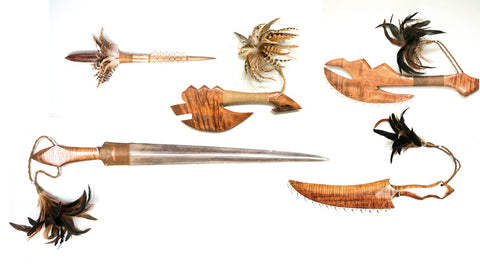Why is Koa Wood Special?
Jul 05, 2020
As I'm looking out over the Koa and Ohia forest, I’m reminded of the gratitude I have for my role as steward and protector of this great resource. Although Koa is still relatively unknown by most people unfamiliar with Hawaiian culture, Koa is one of the most unique woods in the world. What makes Koa so special?
Koa wood is special because of three primary reasons, its beauty, rarity, and symbolic meaning. The beauty of Koa is rooted in its unique grain patterns and a variety of colors. It only grows in Hawaii and has played a significant role in ancient Hawaiian history.
When you take an interest in Koa and allow your curiosity to uncover all there is to know about it, you’ll find that there is a vibrant narrative to discover.
It All Starts With the Koa Tree
Perhaps one of the most distinctive things about Koa is that it grows nowhere else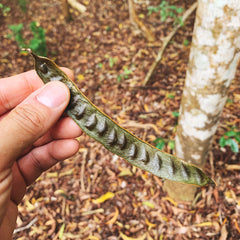 in the world but Hawaii. Within this island region, it generally grows at elevations between 2000 to 6000 feet above sea level. Koa's growth form and habits can vary slightly from island to island. For example, the leaf structure or seed of a tree growing on the island of Kauai may look slightly different than one growing on the Big Island. The picture on the right is a Koa seedpod from a Big Island Koa Tree.
in the world but Hawaii. Within this island region, it generally grows at elevations between 2000 to 6000 feet above sea level. Koa's growth form and habits can vary slightly from island to island. For example, the leaf structure or seed of a tree growing on the island of Kauai may look slightly different than one growing on the Big Island. The picture on the right is a Koa seedpod from a Big Island Koa Tree.
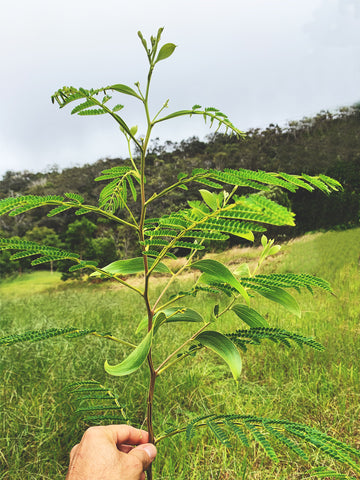 One of the things that I love about the Koa tree is its unusual foliage. For starters, the Koa tree's leaves undergo a transformation as they grow from young plantings into mature trees. For a period of time during this metamorphosis, it’s possible to find two district forms of leaves growing on the same branch (as exemplified in the photo on the left). Once mature, the leaf is capable of pulling water from passing clouds, also called fog drip. The leaf shape and structure provides a surface area to collect moisture from the clouds and channel it down leaf tips to the forest floor. In other words, when the conditions are right the Koa tree is capable of self-watering.
One of the things that I love about the Koa tree is its unusual foliage. For starters, the Koa tree's leaves undergo a transformation as they grow from young plantings into mature trees. For a period of time during this metamorphosis, it’s possible to find two district forms of leaves growing on the same branch (as exemplified in the photo on the left). Once mature, the leaf is capable of pulling water from passing clouds, also called fog drip. The leaf shape and structure provides a surface area to collect moisture from the clouds and channel it down leaf tips to the forest floor. In other words, when the conditions are right the Koa tree is capable of self-watering.
Interesting Facts about the Koa
- Koa trees drop seeds into the ground and those seeds can lie dormant for more than 25 years before sprouting.
- Koa trees make their own nitrogen, so there is never a reason to have to fertilize.
- Koa litter decays quickly and takes about a year and a half for the leaf to compost and disappear.
- Koa trees are wind resistant, but it is vulnerable to snapping off and uprooting in extremely high winds.
- Koa forests are home to 30 of the 35 remaining native Hawaiian forest bird species (17 of which are endangered).
Koa Has Historic Meaning and Value
Koa is legendary to the native population of Hawaii. It is part of the Hawaiian heritage, revered and sacred to some. Koa played an important part of life for the ancient Hawaiians. From the calabash (bowl) to warrior weapons, Koa is a cherished resource.
During the time of King Kamehameha The Great, in the late 1700s, the Koa tree was abundant. And warriors of that time were named Koa; meaning warrior and synonymous with the tree. The wood was used to make everything from canoes and paddles to swords and clubs. Koa wood played an instrumental part in helping King Kamehameha and his warriors bring the islands under his rule. Koa developed into a treasured symbol for Hawaii and became “kapu” or prohibited for anyone to possess Koa wood except for Hawaiian monarchs.
The Koa Tree is Rare
Not only do Koa trees grow in very select areas of Hawaii, but their numbers are relatively small. This wasn’t always the case, Koa canopies dominated much of the Hawaiian islands until much of the land where Koa trees thrived was turned into grazing for agricultural reasons during the 1800s. In the process of converting Koa forests to pastures, many trees were harvested and milled for their valuable lumber.
Today, the availability of Koa wood is limited, there are few private lands with the stock of old-growth Koa trees and harvesting wood from public land is illegal. In addition, the characteristics that make Koa valuable requires a mature tree. It can take over 50 years or more before the tree can produce the grain and curl patterns for which Koa wood is known. Therefore sources and availability for quality Koa wood are narrow and finite.
Compounding the issue of scarce availability of Koa wood is the wide demand and popularity of Koa currently being used in guitar manufacturing. Koa has a tonal quality that musicians seek. It has a midrange focus with extra top-end brightness. As the instrument is played with frequency the tone continues to open up to an even richer, sweeter, and more pleasant resonant tone. That, combined with its aesthetic appeal, Koa has branded itself as one of the best materials for instrument building. And as a result, large guitar manufacturers have seized the opportunity to satisfy this demand, further driving the availability of Koa wood down and its price up.
The Wood Grain Pattern Is Exceptional
Koa wood is arguably one of the most beautiful woods in the world. It is special in its own right because of its unique figuring, colors, and textures. All of which is influenced and determined by the age of the tree, its elevation and soil in which it grows. Koa’s colors range from light golden blonde to auburn red, to deep chocolate brown.
| Golden Blonde | Auburn Red | Chocolate Brown |
 |
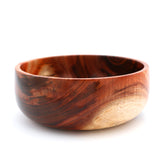 |
 |
Koa grain patterns are infinitely diverse. The most common grain patterns, however, are straight-grained, figured, and wavy or curly (see an example of each in the product photo chart below). Straight grain pattern exhibits grains that are best described as the most "normal-looking" wood grains. Of the three mentioned, this is the most common, abundant, and most affordable. Having cut and milled many Koa logs, this is by far the most prevalent.
| Straight-Grained | Figured | Wavy or Curly |
 |
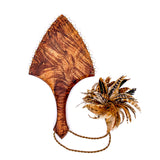 |
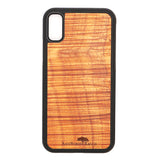 |
Curly or wavy patterns are rarer and are typically found in the old-growth trees. This is the most desired grain pattern and commands top dollar. Figured is also desired and typically milled from areas of the tree where there is the most stress. For example, where the branch forks or twists. Pressure from the weight of the branch and/or stress created by the wind often causes the tree to develop this figuring.
The prevalence of these “curls” and tight grain pattern in Koa is known to create a holographic appearance in the wood. This three-dimensional quality is sometimes referred to as chatoyancy. The word chatoyancy is a term often used in gemology. It is an optical reflectance effect seen in certain gemstones…and in this case, it is seen in the wood. The pinnacle of dimensional Koa lumber is a high level of chatoyancy. In my opinion, this is one of Koa’s greatest attributes.
Like No Other Wood in the World
Without question, Koa wood is beautiful. From its distinctive grain pattern and colors to its tonal properties and capacity to reflect light like a gem, it is a step above the rest. In addition, Koa carries a rich Hawaiian history filled with deep meaning and tradition. For these reasons and more, Koa is one of the most desirable woods, it is special because it is like no other wood in the world.


